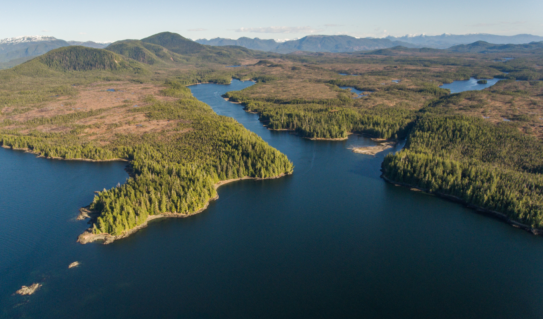The jellyfish were made almost entirely from single-use plastics that I collected from around my house instead of throwing them away. I also went to a recycling centre to collect even more. The vast majority is just that and hot glue. I also added glow-in-the-dark paint to give them a different feel when it's dark or they're exhibited at night. I also added glow-in-the-dark paint to give them a different feel when it's dark or they're exhibited at night.
Articles
Reuse to create

Jul is a young visual artist and fine arts student at Concordia University. As part of the Ocean School's celebration for Ocean Week Montreal, Jul exhibited her art installation JellyTrash in the lobby of the NFB offices. The JellyTrash were made from single-use plastics and were intended to highlight "the major threat [plastic represents] to our ocean, endangering marine biodiversity and the balance of our ecosystem."
We spoke to Jul to learn more about her artistic process leading up to the creation of JellyTrash.
Here's our Q&A with Jul.
The artistic process
What were the JellyTrash made of?

How did you come up with the idea for this art piece?
I started thinking about ways to reduce my waste when I started my bachelor's degree. I gave it more thought when I saw that there was an artistic residency linked to a recycling centre (the CUCCR). Since then, it's been in the back of my mind. Then I thought of Ocean Week. I was also doing this for another exhibition where we were putting the night [in relation] with the art world. I thought, "Can I do something that's a bit trippy, but can also [fit in with Ocean Week]?" I thought of jellyfish! What's important to me, in my artwork, is that it can flourish in many different environments. A work of art isn't meant to be seen in just one place, it should be able to prosper in several art galleries, homes or museums...

Noo Jii live performance at PlatformA (photographer: Jul)
Why is it important for your work to have more than one life?
It doesn't seem like it per se, but it takes an enormous amount of time to make [these projects]. I spent at least 80 hours creating the JellyTrash, not to mention the time it took to conceptualize it. Most artworks take an enormous amount of time to make – much more than the public can imagine. So I try to do my work [in this spirit], but also because I want to reach a wider audience. Of course, it also helps on the environmental front. It's important for my creations to have several lives because that's how you know you've done a good job as an artist. If my work can be appreciated on different occasions, by a different audience, for me, that means it's a successful piece.

Look inside your house!
Why was it important for you to work with recycled materials?
For me, the link between plastic and the ocean is very obvious! A lot of our waste ends up in the oceans. It's also a very flexible and accessible material. I had it at home. I didn't have to go far to get it.
I was also really interested in the material's transparency. It doesn't have the same result when there's natural light as when there’s subdued light from spotlights passing through the artwork; the outcome was different in the two exhibitions. And that's interesting to me: to see how light and transparency will affect my work.

Do you use a lot of recycled materials in your work?
I'd say that right now, in my practice, this kind of project is really more of an exploration. I don't want to limit myself by only using one type of material. But I do try to be careful about how I use my materials. For example, I'll reuse my canvases or frames, instead of buying a whole new one.

What would you say to another artist who wants to make a difference for the environment but isn't sure of where to start?
Look inside your house! There are so many things we throw away that can be transformed and used. The first and best thing we can do for the environment is to reuse. I'm thinking of reusing materials you already have, or even reusing artwork if it no longer seems to serve its purpose. So take a look before you throw anything away. I also think that sometimes you shouldn't think too much and just start creating.

Beyond her exhibition for Ocean Week, Jul plans to take her project a step further by creating jellyfish on a larger scale, to draw attention to ocean pollution in an even more striking way. To learn more about Jul's artistic approach and upcoming projects, look at her TikTok and Instagram accounts.
Want to find out more about Ocean School's activities during Ocean Week? Read all about it in our article!
This conversation has been edited and condensed.
Community
Bringing blue learning into Atlantic classrooms

Bringing blue learning into Atlantic classrooms
The importance of ocean literacy: why it matters to us all

The importance of ocean literacy: why it matters to us all
What you need to know about our astonishing ocean













